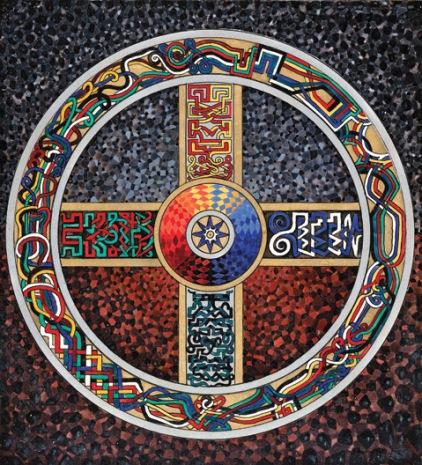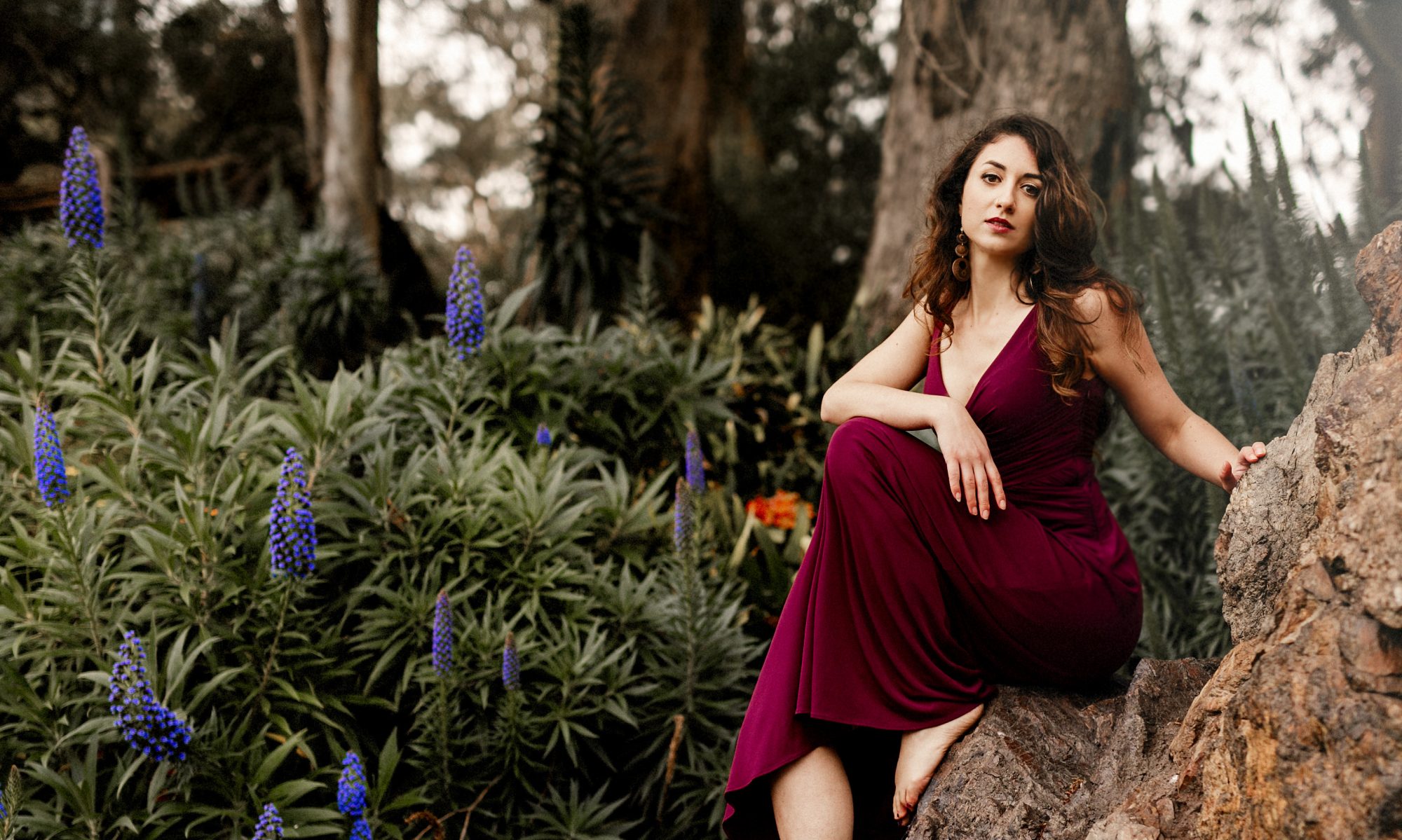On this New Moon in the heart of spring, I wish to share my comprehensive exam on The Red Book of C.G. Jung, which has been my primary academic focus since the start of this year. This is the second of my two comprehensive exams for my dissertation on the Red Books of Jung and Tolkien. My first exam, on the works and context of J.R.R. Tolkien, can be found here. As with the previous exam, much of the material I’ve written will be part of my dissertation, so I am again not posting it in its entirety, but rather sharing the introduction to give a taste of the work.
A Comprehensive Exam
on
The Red Book of C.G. Jung
“The years when I was pursuing my inner images were the most important in my life—in them everything essential was decided. It all began then; the later details are only supplements and clarifications of the material that burst forth from the unconscious, and at first swamped me. It was the prima materia for a lifetime’s work.”
– C.G. Jung, Memories, Dreams, Reflections[1]
“But your vision will become clear only when you look into your own heart. Without, everything seems discordant; only within does it coalesce into unity. Who looks outside dreams; who looks inside awakens.”
– C.G. Jung, Letter to Fanny Bowditch, October 22, 1916[2]
Introduction
The sea, the mountains, the infinite expanse of stars, the fiery depths, the darkness of the abyss—the world recorded on the pages of C.G. Jung’s Red Book is not the physical domain of the outer world, the world of common day. It is the realm where dreams and fantasy visions arise. It is the wellspring of imagination. It is the natural habitat of the soul, the place where the depths of the psyche are encountered. Many creative individuals have attested to the existence of this second world and have recorded their experiences there in the forms of art, literature, and mystical revelation.
Beginning in 1913, Jung began to engage with a series of profound, visionary fantasies, an encounter with inner images and figures that would change the course of his life. Some say that Jung had gone insane, others that he had received a revelation. Perhaps he had descended to the source where such visions emerge, whether such visions are the delusions of the insane, who are entirely severed from outer reality, or the revelations of the mystics who remind us, as Nietzsche says, that “the world is deep, deeper than day can comprehend.”[3] But rather than proclaiming himself a new prophet, Dr. Jung instead maintained his scientifically-oriented, empirical perspective: he sought an understanding of the origins of the visions, dreams, and fantasies. The journey toward understanding their source led him through the veil into the collective unconscious, the realm of archetypes.
In an effort to understand the meaning of his visionary wanderings, Jung chose to craft a record of his experience in an exquisite, leather-bound volume with the words Liber Novus—the New Book—etched in gold along its red spine. Sonu Shamdasani, editor of The Red Book, has described Jung’s unique project as “a literary work of psychology.”[4] Liber Novus can be seen as the meeting of many rivers, an intersection of psychology, art, literature, and religion—an expression of the efflorescence of human experience.
To enter into an understanding relationship with this unusual work, it must be situated: first in relation to Jung’s biography, and then in relation to the arena of world events in which Jung’s experiences were unfolding. Thus, I begin by focusing on this pivotal period in Jung’s life, drawing from several biographical perspectives and scholarly positions. Next, I look into the practice of active imagination to better understand the method Jung employed to engage with his emerging fantasies. From here I enter into a distillation of The Red Book itself, drawing forward a narrative summary of the three sections Jung composed: Liber Primus, Liber Secundus, and Scrutinies. Finally, I conclude by exploring the implications of The Red Book, first as it shaped Jung’s subsequent theories and writings, and secondly, how its publication in the twenty-first century has begun to change depth psychology, as well as our understanding of the ontology of imagination.
[1] C.G. Jung and Aniela Jaffé, Memories, Dreams, Reflections, trans. Richard and Clara Winston (New York: Vintage Books, 1989), 199.
[2] C.G. Jung, C.G. Jung Letters, Vol. 1: 1906-1950, ed. Gerhard Adler and Aniela Jaffé, trans. R.F.C. Hull, Bollingen Series XCV: 1 (Princeton, NJ: Princeton University Press, 1973), 33.
[3] Friedrich Nietzsche, Thus Spoke Zarathustra, trans. R.J. Hollingdale (London: Penguin Books, 2003), 333.
[4] Sonu Shamdasani, Jung Stripped Bare by His Biographers, Even (London: Karnac, 2005), 25, note 59.
Bibliography
Bair, Deirdre. Jung: A Biography. New York: Little Brown, 2003.
Brutsche, Paul. “On Aspects of Beauty in C.G. Jung’s Red Book.” ARAS Connections: Image and Archetype 1 (2010).
Corbin, Henry. “Mundus Imaginalis, or The Imaginary and the Imaginal.” Translated by Ruth Horine. En Islam Iranien: Aspects Spirituels et Philosophiques, tome IV, livre 7. Paris, France: Gallimard, 1971.
Drob, Sanford L. Reading The Red Book: An Interpretive Guide to C.G. Jung’s Liber Novus. New Orleans, LA: Spring Journal Books, 2012.
Giegerich, Wolfgang. “Liber Novus, That is, The New Bible: A First Analysis of C.G. Jung’s Red Book.” Spring: A Journal of Archetype and Culture 83 (Spring 2010): 361-411.
Goldenberg, Naomi. “Archetypal Theory and the Separation of Mind and Body.” In Weaving the Visions: New Patterns in Feminist Spirituality. Edited by Judith Plaskow and Carol P. Crist, 244-55. San Francisco, CA: Harper & Row, 1989.
Hall, James A. Jungian Dream Interpretation: A Handbook of Theory and Practice. Toronto, Canada: Inner City Books, 1983.
Hannah, Barbara. Jung: His Life and Work. Wilmette, IL: Chiron Publications, 1997.
Hillman, James and Sonu Shamdasani. Lament of the Dead: Psychology after Jung’s Red Book. New York: W.W. Norton & Company, 2013.
Hoeller, Stephen A. The Gnostic Jung and the Seven Sermons of the Dead. Wheaton, IL: Quest Books, The Theosophical Publishing House, 1982.
–––––. “Jung, Kabbalah, and Gnosis.” Psychological Perspectives 55:2 (2012): 163-81.
Irvine, Ian. “Jung, Alchemy, and the Technique of Active Imagination.” In Alchemy and Imagination, part 3. Croydon, Victoria, Australia: Mercurius, 2010.
Jeromson, Barry. “The Sources of Systema Munditotius: Mandalas, Myths and a Misinterpretation.” Jung History 2:2 (2007): 20-26.
–––––. “Systema Munditotius and Seven Sermons: Symbolic Collaborators in Jung’s Confrontation with the Dead.” Jung History 1:2 (2005-2006): 6-10.
Jung, C.G. Aion: Researches into the Phenomenology of Self. 2nd edition. Vol. 9, part 2 of The Collected Works of C.G. Jung. Translated by R.F.C. Hull. Edited by H. Read, M. Fordham, G. Adler, and W. McGuire. Bollingen Series XX. Princeton, NJ: Princeton University Press, 1968.
–––––. Analytical Psychology: Notes of the Seminar Given in 1925. Edited by William McGuire. Bollingen Series XCIX. Princeton, NJ: Princeton University Press, 1989.
–––––. “Answer to Job.” In The Portable Jung. Edited by Joseph Campbell. Translated by R.F.C. Hull, 519-650. New York: Viking, 1971, Penguin, 1976.
–––––. The Archetypes and the Collective Unconscious. 2nd edition. Vol 9, part 1 of The Collected Works of C.G. Jung. Translated by R.F.C. Hull. Edited by H. Read, M. Fordham, G. Adler, and W. McGuire. Bollingen Series XX. Princeton, NJ: Princeton University Press, 1968.
–––––. C.G. Jung Letters, Vol. 1: 1906-1950. Edited by Gerhard Adler and Aniela Jaffé. Translated by R.F.C. Hull. Bollingen Series XCV: 1. Princeton, NJ: Princeton University Press, 1973.
–––––. “The Concept of the Collective Unconscious.” In The Portable Jung. Edited by Joseph Campbell. Translated by R.F.C. Hull, 59-69. New York: Viking, 1971, Penguin, 1976.
–––––. Mysterium Coniunctionis. 2nd edition. Vol 14 of The Collected Works of C.G. Jung. Translated by R.F.C. Hull. Edited by H. Read, M. Fordham, G. Adler, and W. McGuire. Bollingen Series XX. Princeton, NJ: Princeton University Press, 1970.
–––––. “Psychology of the Transference.” In The Practice of Psychotherapy. Vol. 16 of The Collected Works of Carl Gustav Jung. Translated by R.F.C. Hull. Edited by H. Read, M. Fordham, G. Adler, and W. McGuire, Bollingen Series XX, 163-338. Princeton, NJ: Princeton University Press, 1985.
–––––. “The Psychology of the Unconscious Processes.” In Collected Papers on Analytical Psychology, 2nd edition. Edited by Constance Long. New York: Moffat Yard and Company, 1917.
–––––. The Red Book: Liber Novus. Edited by Sonu Shamdasani. Translated by Mark Kyburz, John Peck, and Sonu Shamdasani. New York: W.W. Norton & Company, 2009.
–––––. Symbols of Transformation. Vol. 5 of The Collected Works of C.G. Jung. Translated by R.F.C. Hull. Edited by H. Read, M. Fordham, G. Adler, and W. McGuire, Bollingen Series XX. Princeton, NJ: Princeton University Press, 1956.
Jung, C.G. and Aniela Jaffé. Memories, Dreams, Reflections. Translated by Richard and Clara Winston. New York: Vintage Books, 1989.
McLynn, Frank. Carl Gustav Jung. London: Bantam, 1996.
Nietzsche, Friedrich. Thus Spoke Zarathustra. Translated by R.J. Hollingdale. London: Penguin Books, 2003.
Owens, Lance. S. “The Hermeneutics of Vision: C.G. Jung and Liber Novus.” The Gnostic: A Journal of Gnosticism, Western Esotericism and Spirituality 3 (July 2010): 23-46.
–––––. “Jung and Aion: Time, Vision, and a Wayfaring Man.” Psychological Perspectives 54 (2011): 253-89.
Owens, Lance S. and Stephen A. Hoeller. “Carl Gustav Jung and The Red Book: Liber Novus.” In Encyclopedia of Psychology and Religion, 2nd edition. Edited by David A. Leeming. New York, Springer Reference, 2014. Accessed on May 2, 2016. http://link.springer.com/referenceworkentry/10.1007%2F978-1-4614-6086-2_9071.
Ribi, Alfred. The Search for Roots: C.G. Jung and the Tradition of Gnosis. Los Angeles, CA: Gnosis Archive Books, 2013.
Shamdasani, Sonu. C.G. Jung: A Biography in Books. New York: W.W. Norton & Company, 2012.
–––––. “C.G. Jung and the Red Book.” Paper presented at the Library of Congress, Washington, D.C., June 19, 2010.
–––––. Jung Stripped Bare by His Biographers, Even. London: Karnac, 2005.
–––––. “Who Is Jung’s Philemon? An Unpublished Letter to Alice Raphael.” Jung History 2:2 (2007): 5-7.
Shamdasani, Sonu and John Beebe. “Jung Becomes Jung: A Dialogue on Liber Novus (The Red Book).” Psychological Perspectives 53:4 (2010): 410-36.
Sherry, Jay. “A Pictorial Guide to The Red Book.” ARAS Connections: Image and Archetype 1 (2010).
Von Franz, Marie-Louise. Alchemical Active Imagination. Boston, MA: Shambhala, 1997.
–––––. C.G. Jung: His Myth in Our Time. Translated by William H. Kennedy. Toronto, Canada: Inner City Books, 1998.
Wilhelm, Richard, trans. The Secret of the Golden Flower: A Chinese Book of Life. Orlando, FL: Harcourt Brace & Company, 1962.
Wilson, Colin. Lord of the Underworld: Jung and the Twentieth Century. Wellingborough, UK: The Aquarian Press, 1984.
